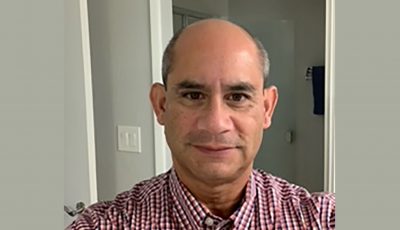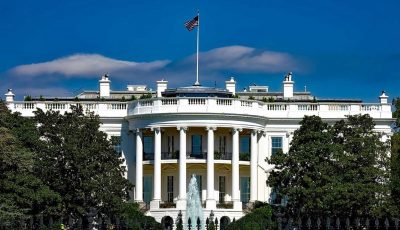Electing the nation’s President and Vice President
This replies to Jaime R. Vergara’s opinion piece, in which he wonders why (except for the territories) we directly elect the President when it’s electoral votes that count. It’s because we do not directly elect the President. We indirectly elect the President and Vice President by electing the people who directly elect, or rather appoint them.
As a matter of constitutional form, the President and Vice President of the United States are appointed by the United States Congress. It is the last and most important step the long process of selecting our chief executive and his or her “first runner-up,” as it were. Congress is constitutionally bound to examine, accept or reject, and tabulate the electoral votes cast by the electors of the 50 states and the District of Columbia; and to accept the result unless it has a lawful reason not to do so.
The electors cast their ballots in their respective state capitals (or DC itself) on the first Monday following the second Wednesday of December, of every fourth year measured from 1788. That was the year in which the first President and Vice President under our second federal Constitution were chosen by 10 of the 13 states. New York did not choose its electors in time to participate in the 1788 election. North Carolina and Rhode Island were not eligible to participate because they had not yet ratified the new constitution. So they were still operating under the terms of our first constitution, which was in effect from March 1, 1781, to March 4, 1789. Vermont was not even part of the country at the time. Having declared independence from New York and New Hampshire as well as from Great Britain, the Commonwealth of Vermont was a separate republic from Jan. 15, 1777 to March 4, 1791, when it joined confederation after ratifying the U.S. Constitution on Jan. 10 of that year.
Congressional rejection of electoral votes is rare but has happened on several occasions, most famously in 1877. If there is a tie, which happened in 1800; or if a candidate does not achieve a majority of votes cast, which first happened in 1824; or if there is some other reason Congress cannot accept the result of the electoral vote, the President is chosen by the House of Representatives, with each state’s delegation having one vote; and the Vice President is chosen by the Senate, which each senator having one vote.
There are currently 538 electoral votes, so a majority of 50 percent + 1 means that a candidate must win 270 electoral votes to win election. As currently distributed across the country, the 11 most populous states have exactly 270 votes between them and, thus could decide the election regardless how the other 39 states and Washington, D.C. might vote. Those 11 states are California, Texas, New York, Florida, Illinois, Pennsylvania, Ohio, Michigan, Georgia, North Carolina, and New Jersey (1 Western State; 1 South Central; 3 South Eastern; 3 Great Lakes; 3 Mid-Atlantic).
Contrary to popular belief, there is no popular election for President in the United States. Instead, there are 51 popular elections—one in the District of Columbia and one in each of the 50 states. Although there is national tabulation of the 51 results, that tabulation is solely for convenience and has no legal status. Under the terms of the U.S. Constitution, each state and the District of Columbia is responsible for conducting its own election—if it wants to have one. The sole purpose of each popular election is to choose the electors who will vote for President and Vice President on the first Monday after the second Wednesday in December in a presidential election year.
There is no constitutional requirement for the states or D.C. to hold a popular election. Each state is free to choose its electors however it may wish to do so. All states have chosen their electors by popular vote since 1861, when South Carolina became the last state to do so. All states now hold their presidential election on the first Tuesday after the first Monday in November, which is the date set by the Congress to hold congressional elections in every even-numbered year. The Constitution only requires states to cast their electoral votes on the same day throughout the nation. Whether they must also conduct their popular elections on the same day is an open question. Historically, they did not do so; and because the Constitution does not require any popular election to be part of the process, it does not mention them.
Contrary to popular belief, electors chosen by popular election are bound to cast their votes according to the result of their state’s own popular election. This is because the right to vote is a fundamental right; so the result of that vote is protected by the due process and equal protection provisions of the Fourteenth Amendment to the U.S. Constitution. If the voters tell their state to cast its electoral votes for the Brand X candidate and the state then casts its electoral votes for the Leading Brand candidate, the fundamental right of the voters to instruct their state how to cast its electoral votes has been infringed without due process and/or equal protection of the law; and Congress would have legal ground, if not obligation, to reject the electoral votes cast by that state.
If any or all of the five inhabited U.S. territories wished to do so, there is nothing to prevent them holding their own popular elections for President and Vice President. Those elections would be arguably a waste of taxpayer dollars because no electors are allocated to any of the territories—so the results would have no effect whatsoever on the process of selecting the President and Vice President. But even exercises in a vacuum can have their uses, and there is certainly value at least in schools, colleges and community groups conducting their own informal elections as a matter of civics education.
Mícheál T. McLoughlin, Esq, DJur, MA
San Francisco, California

























